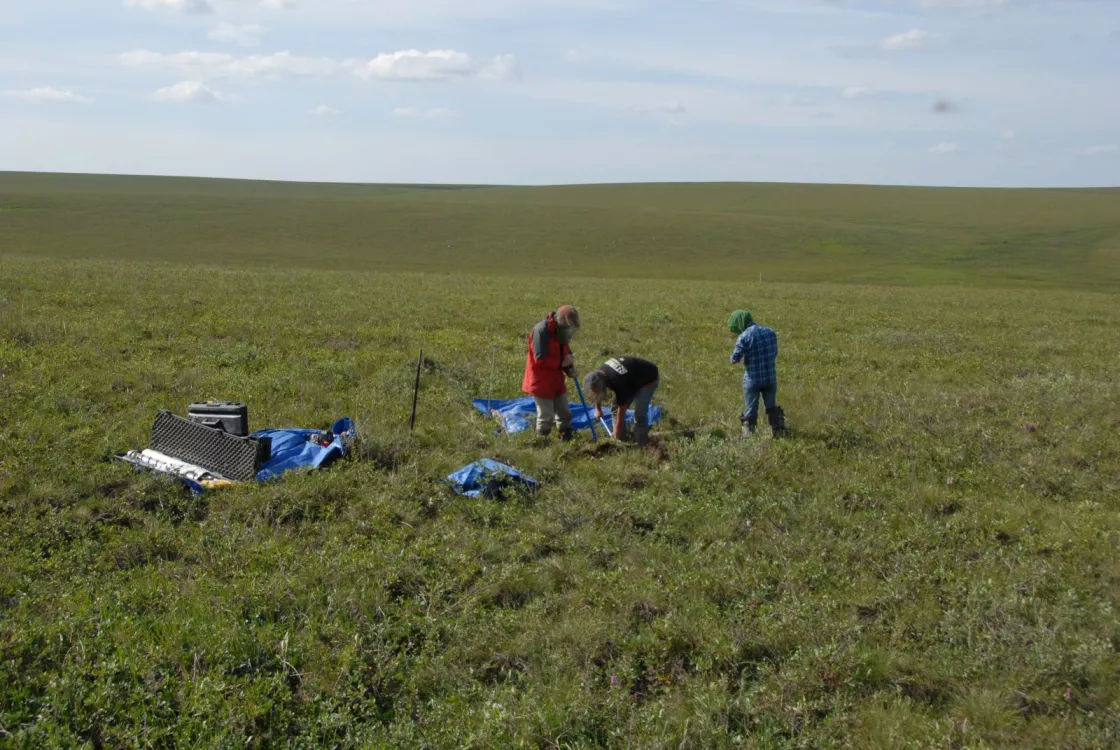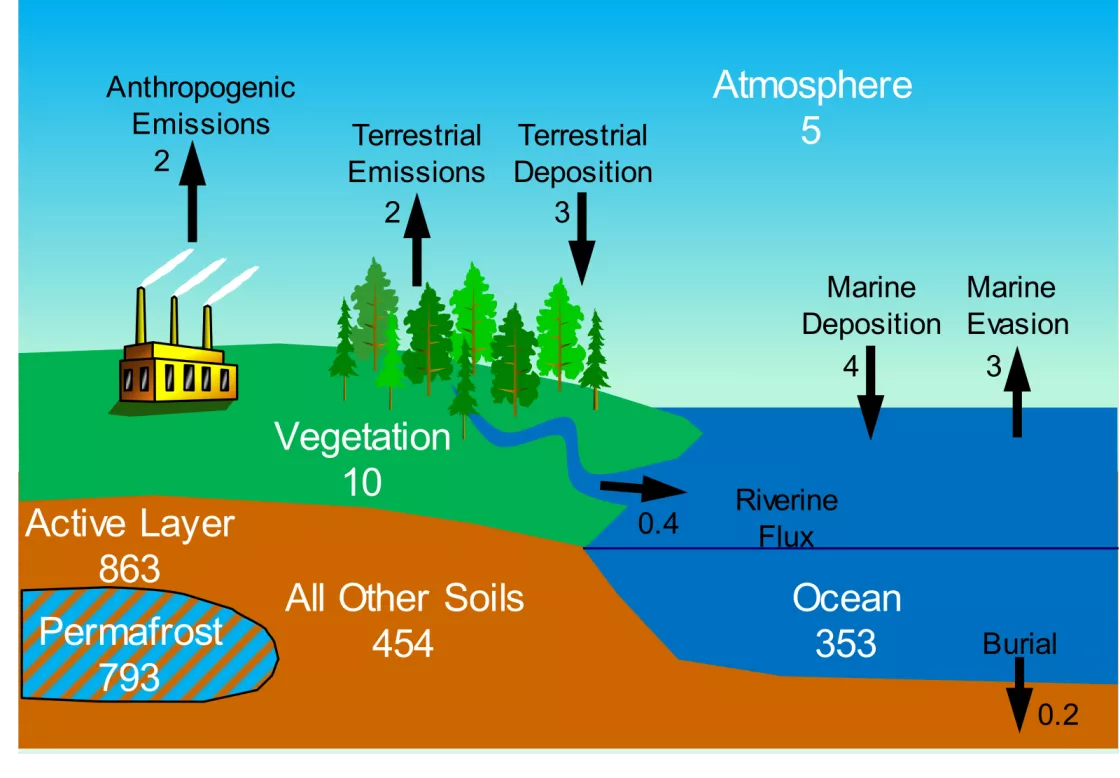By Laura Naranjo
Around the Arctic, thawing permafrost is seeping out secrets that have long been frozen underground. Finding woven baskets and spear shafts emerging from the warming permafrost can offer insightful clues about our past. Yet other elements could have troubling implications for our future. Recent research has focused on the amount of carbon that permafrost might release, but NSIDC researcher Kevin Schaefer has discovered huge amounts of mercury stockpiled in Arctic soils. Schaefer said, “There is twice the amount of mercury in permafrost as in the rest of the planet combined.”
As the Arctic warms, much of this mercury will thaw out of the permafrost, which leads Schaefer and his colleagues to wonder, “Why is there so much mercury in permafrost? How much mercury might be released?”
From fire to food chain
Although small amounts of mercury occur naturally, high levels can be dangerous, causing neurological and reproductive damage in animals and humans. In fact, the 1990 US Clean Air Act listed mercury as a toxic pollutant, in part because it accumulates in fish and other marine creatures and then bioaccumulates in humans who eat seafood.
So where does all this mercury come from? Volcanoes spew about half of the mercury found in the atmosphere, and small amounts leach from bedrock. The other half is from human activities, including coal-fired power plants, mining, and smelting. Human-generated mercury emissions have risen significantly over the past 200 to 300 years, producing atmospheric concentrations far higher than pre-industrial levels.
From the atmosphere, mercury deposits onto surfaces, such as trees and the ground, and ultimately filters down into the soil. Schaefer said researchers have long suspected that if carbon is in the soil, mercury probably is, too. This is because mercury mimics nutrients and binds with organic matter, which is often carbon-based. Mercury then gets eaten by microbes in the soil, then released. “Some of this mercury is released back into the atmosphere, and some enters water sources, where it’s consumed or absorbed by fish,” Schaefer said. “This is where it makes it into the food chain.”
The team Schaefer worked with discovered the mercury by drilling 13 permafrost cores across Alaska. They carefully sliced the cores, freeze-dried them, and then ground up the samples using ceramic knives and other protective measures that would not contaminate the core’s chemical composition. After measuring both mercury and carbon content, they verified their findings against a larger swath of samples gleaned from published research. Sifting through more than 11,000 measurements taken in temperate and boreal areas led the team to realize their data lined up with the broader record. Permafrost indeed held more mercury, 1,656 gigagrams of it, which is equivalent to 32 million gallons, or 50 Olympic-sized swimming pools.
Frozen in time
This mercury depositing and cycling occurs all over Earth’s surface, so why does Arctic permafrost hold so much of it? The same processes govern mercury accumulation in both the tropics and the Arctic; the difference is the presence of permafrost. Tropical areas and non-permafrost regions have more organic matter and more receptor sites with which to bind mercury, meaning mercury is consumed and cycled back into the atmosphere or water more quickly. “But in the Arctic, it’s cold, and the soil freezes,” Schaefer said. “There is a slow decay rate, so there’s a slow buildup of mercury within the permafrost.” Mercury is still depositing from the Arctic atmosphere, but the microbial processes that consume mercury function much more slowly in frozen soil, meaning mercury accumulates rather than being cycled through.
Considering permafrost underlies about 24 percent of Northern Hemisphere land, huge portions of mercury are vulnerable to release. Up until now, most environmental budgets and models assumed there was little or no mercury in permafrost. Schaefer’s research indicates that peak mercury release will likely happen around the year 2100, once all organic matter in the permafrost thaws. “We uncovered a huge vulnerable pool of mercury that no one knew was there,” Schaefer said. “This really is a game changer.”
Reference
Schuster, P. F., K. M. Schaefer, G. R. Aiken, R. C. Antweiler, J. F. Dewild, J. D. Gryziec, A. Gusmeroli, G. Hugelius, E. Jafarov, D. P. Krabbenhoft, L. Liu, N. Herman-Mercer, C. Mu, D. A. Roth, T. Schaefer, R. G. Striegl, K. P. Wickland, and T. Zhang. 2018. Permafrost stores a globally significant amount of mercury. Geophysical Research Letters, 45.
For more information
Scientists find massive reserves of mercury hidden in permafrost

